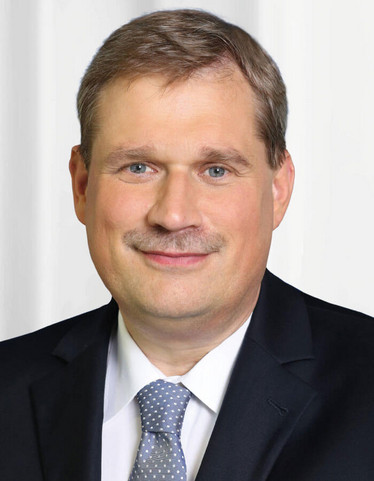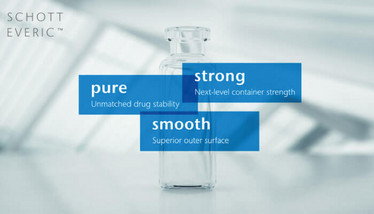
Built On Innovation
Innovation in glass continues to be a key enabler for allowing pharma manufacturers to make better, safer products for patients. This has been SCHOTT’s mantra for more than 130 years – why stop now?
sponsored by Schott

SCHOTT’s history dates back to 1879 when the company’s founder, Otto Schott, invented a special lithium-based glass with novel optical properties and shared his discovery with Ernst Abbe. This laid the foundation for a close collaboration, which soon resulted in Otto Schott, Ernst Abbe, Carl and Roderich Zeiss to found the Schott & Associates Glass Technology Laboratory in Jena, Germany, in 1884 (today’s SCHOTT AG). The company also invented chemically resistant borosilicate glass, which has since become the main primary packaging material for use in pharma packaging. SCHOTT’s history is built on enabling customers to develop high-performance products and the company continues to innovate today. SCHOTT produces 11 billion pharmaceutical containers every year and is also one of the few companies that is in control of its entire value chain – something that is becoming more and more important to pharma customers. Companies no longer just want a container; they expect services to come with it too, such as leachables profiles, extractables profiles and regulatory support.
We speak with Dr Frank Heinricht, Chairman of the Management Board of SCHOTT AG, to talk about the company’s recent $1 billion investment in its pharma glass business, industry trends and the importance of glass innovation.
Tell us about the company’s $1 billion investment…
As the overall pharma market grows – and particularly with new drugs such as biologics growing at an above average rate – there is a risk of shortages in quality pharmaceutical glass. We are investing $1 billion globally in our pharmaceutical packaging business through 2025 to shore up our capacity. The investment will be used for a number of different projects, including a glass tubing production facility in China and additional tanks and infrastructure in India, where we are seeing increasing demand. Particularly in India, there is huge growth as drug production is transferred from Europe and the US.
Other projects for the investment include a new glass syringe operation in Switzerland, and a new factory in the south of Germany (Müllheim) for SCHOTT TOPPAC ready-to-use polymer syringes and customized container solutions. Overall, our capacity for polymer packaging will be expanded by 50 percent by 2020, and an additional 50 percent over the coming years. We’ll also be expanding our high-value vial production line, including a boost for our new EVERIC pure vials and investment in our iQ platform of ready-to-use vials. Several investments will be completed by the end of 2019.
Why is innovation in glass so important?
My background lies in physics and I’m passionate about innovation – and for a materials-based company like SCHOTT, it is imperative that innovation is the must be led by science and the science of glass is more fascinating than most people realize. Glass is not all the same – a lot of effort goes into making the right glass for use in pharmaceuticals. For example, the bottom-near heel region of standard vials often acquires an inhomogeneous chemical structure during the forming process and is prone to ion exchange, which may potentially harm the drug. Physics and chemistry dictate that there will always be some kind of interference between the drug and the glass, and there is an art to designing the right container made out of borosilicate glass that really minimizes this interference – getting it as close to zero as possible. We have developed different coatings and different glass treatments to ensure that we can offer a very specific solution for every API, ensuring that products have a long shelf life with no risk to the patient.
We want to give our customers options. Not everyone follows the same path forward so it’s important for suppliers like us to have a huge toolbox that allows customers to select the right product to suit their needs – perhaps a ready-to-use container that has been made in the right way with the right raw materials, or a container with a specific strength, for example. Right now, requirements are becoming tighter and tighter when it comes to particles and there is also a growing demand for traceability in the supply chain – customers want to know the history of a container, including how it was made, when it was made and so on. Traceability has always been very important to SCHOTT.
What other trends are you seeing in the pharma market?
Although quality expectations are already high in the pharma industry, the bar is being raised even further. The FDA is constantly pushing manufacturers to provide better medicines. With particulates, for example, the standard limit a few years ago was around 300 microns. Today, it’s closer to 100 microns. Regulators in other countries are also looking to follow FDA standards when overhauling their own pharma regulations.
In addition, drugs are becoming more sensitive and specialized. There are over 3000 drugs in the pipeline and roughly two thirds of these are biopharmaceuticals. These sensitive drugs have specific requirements in terms of packaging – and this is why we have launched products recently that specifically cater to sensitive drugs. There is also a lot of focus on cell and gene therapy and personalized medicines. Many new drugs will target smaller patient populations, so low-fill operations and flexible manufacturing will be significant trends for the foreseeable future.
What are some of the latest innovations from SCHOTT?
SyriQ BioPure was launched in 2018 and has had a positive reaction from customers. With the newest innovation of our syriQ BioPure range, we were the first company to introduce a syringe that uses no lubricant. It was specifically designed with the sensitive needs of biologics in mind. The interaction between silicone and biologic drugs has been a concern in industry, but being silicone free eliminates that problem.
In 2019, we launched EVERIC, which is something I am very excited about. EVERIC has been designed as a modular concept. It provides customers with a unique combination of attributes to package biologic drugs – they can pick what they need; for example, they may choose to prioritize strength, machinability or an order of magnitude improved extractables and leachables profile.
As I mentioned earlier, it is important to give customers options so that there is always something that suits their products and processes. With EVERIC, customers can use the material they already know and have registered, namely FIOLAX® CHR borosilicate glass, and then select the additional features they would like to add to improve the performance of the product. Cost is always an issue for pharmaceutical companies so with a modular approach they can select the performance they really need, balanced with their budget. There are three main modular elements: Pure, Strong, and Smooth.
EVERIC Pure, which is available now, is all about the interaction with the drug and container, and is suitable for sensitive drugs with low filling volumes. It ensures drug stability by using an improved Borosilicate glass tubing. The other modules are currently in testing. EVERIC strong emphasizes strength and preventing breakage by optimizing the geometry through mathematical simulation. EVERIC smooth is designed to give improved container flow through conventional bulk filling lines thanks to a coating on the outer surface. To ensure that unimpeded visual inspection can still take place, the surface treatment is abrasion-free, fully transparent and limited to the most relevant areas of the vial, such as the sidewall. We can therefore improve the coefficient of friction (COF) by 80 percent.

How do you ensure your innovations are easy for pharma companies to adopt?
EVERIC is based on the gold standard in the pharmaceutical packaging industry, namely borosilicate glass. Depending on your chosen options you can better control delamination, or have an improved E&L profile, but ultimately it is the same glass. With any of our innovations, we collect a lot of data and use this to steer our design process, and we also work with the FDA on pre-registration to make it easier for our customers to go through the regulatory processes.
SCHOTT’s role is to always support the pharmaceutical industry as much as possible. Our $1 billion investment is all about enhancing our capability to support the industry. Our slogan is, “Innovators at heart and enablers at work.” Our role is to innovate to help our customers come up with better products for patients.



















